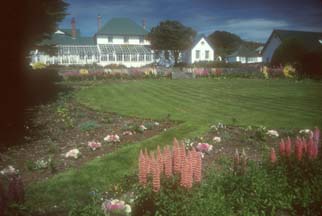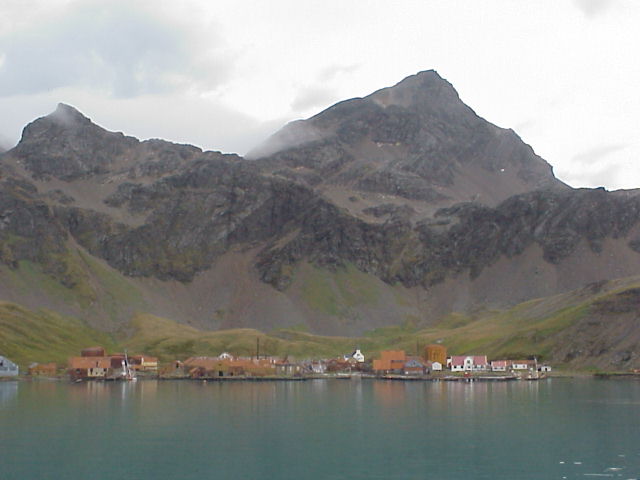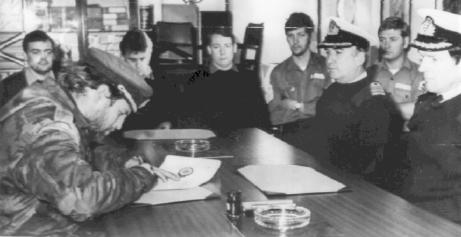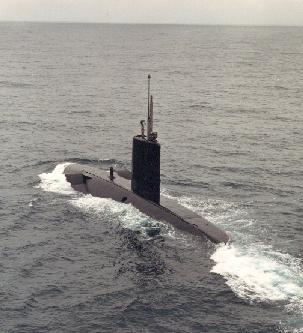May, 1 st
BLACKBURN OPERATION
With Georgias on British power, the Task Force blockaded totally the Malvinas or Falkland islands.
On the afternoon of April the 30 th, from Ascension island (more than 6250km or 3885 miles from distance of the Malvinas islands) a Vulcan, armed with 21 1000 lb-bombs, took off, escorted by eleven aircraft-tankers Victors.

Bomber aircraft Avro Vulcan, Royal Air Force
The last fuel supply was at 650km or 400 miles away from Argentine Port, and the bomber descended to 300ft, advancing directly to the “Malvinas Air Base”, as the Argentine Air Force had renamed to the airport from Argentine Port, or Stanley.
At 45 miles the British crew ascended to 500ft and recognized that they had been detected by the Argentine radars. In max power descended again and started the final approach.
A couple of minutes later, when the Vulcan was at only 19km or 11 miles, the shooting guides “Skyguard” from the Argentine forces grabbed the aircraft. At that time started a mini-battle between the RWR system and the Argentine radars.
In seconds, and out of the Argentine weapons range, the pilot dropped the bombs. Only one reached the runway, but was not sufficient to let it out of operation.
The Vulcan landed four hours later on the same air base that started the mission, completing, by that time, the largest bombing mission from the history.

Ascension Island, the nearest air base of the British forces
BRITISH OFFENSIVE
The Royal Navy moved its ships, including the aircraft carriers, in order to attack the “Malvinas Air Base”. Two Sea Harriers started the attack in the morning, dropping bombs over the Air Base, and the Anti Aerial Artillery, which was the worst enemy to the Royal Air Force, repelled them.

A double Anti-Aerial-Artillery weapon, a 20mm Reinmhental unit. It was the secondary weapon from the Argentine Anti-Aerial-Artillery forces. The main weapon was the 35mm Oerlikon

An illustration of the Reinmhental in action
In other Sea Harrier attack the British machines launched bombs and destroyed three aircraft, and 15 Argentinians died in that attack.

View from Argentine Port -Stanley-, of the British attack to the airport
Different kinds of ships started a naval bombing over the airport too. The Argentine eyewitnesses could appreciate at least five combat vessels attacking it.

Malvinas Air Base in Argentine Port, or Stanley Port, during the war. There were a lot of broken glasses because of the continuing bombings from the British forces
ARGENTINE AIR FORCE ANSWER
When the Harriers completed their missions, all the south-east bases from the Argentine territory where ordered to attack to the British forces. More than 30 machines (between Mirages III, Mirages V, Skyhawks and Canberras).
By the afternoon a group of three IAI Mirage V “Daggers”, armed with three bombs each, attacked a squad of a destroyer and two frigates (the Glamorgan, the Alacrity and the Arrow). At least one ship was reached by a bomb, and the Daggers returned to the continent.

IAI Mirage V Daggers attacking to the Task Force, May the 1st 1982
Other twenty aircraft started patrolling missions in different times. In that patrols were counted three dogfights. Two of them between Mirage V “Daggers” and Sea Harriers, and the third, between two Mirage III and Sea Harriers. In the dogfights the British aircraft could shoot down two aircraft, one from each model. Another Mirage III was shoot down by the Argentine forces when its pilot was trying to land on the Malvinas Air Base, when the fuel tanks were in an extremely low level.
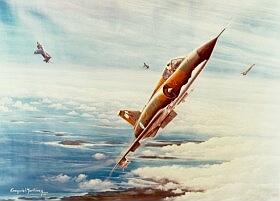
Dogfight between two Argentine Mirage III and two British Sea Harriers
After that, four Argentine Canberras bombers, divided in two sections, attacked to the Royal Navy, but they were old machines with a different capability. One of them was shoot down. Although the other aircrafts couldn’t attack the British ships, they flied over the aircraft carrier Invincible, between heavy AAA firing.
At night the Argentine ship ARA Alferez Sobral was attacked by helicopters, using Sea Skua missiles. The ship, severely damaged, could return to Argentina days later, without any navigation system in function.

Lynx helicopter, armed with Sea Skua missiles

The “Alferez Sobral”
Argentine loses:
-7 aircrafts (2 Mirage III, 1 Mirage V, 1 MB339, 1 IA-58 Pucará, 1 Canberra, 1 Skyvan)
-1 ship reached
-24 lives
British loses:
-Two ships reached, one severely damaged
-A British Sea Harrier
![]()










